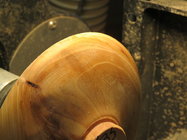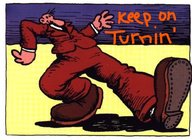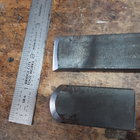I certainly could use more practice rather than creating a satisfactory piece each time I turn. However, I found that I don't enjoy just practicing so I rather take one of my less attractive blanks and actually turn a piece that is appropriate to that blank. Sometimes the result is good and sometimes the wood isn't that great. However, I do agree that I would never turn a unique piece like a burl or heavily figured wood that requires a technique I haven't gotten good at. The reality is, though, in the end, you have to turn that piece at some point and take what comes . . . or else that wood will just sit on the shelf forever. As I age, I worry less about using unique wood for just the right project and just turning something. Each piece has its own character regardless of whether it is perfect or not. As an aside, I bought a number of perfectly clear 4/4 oak bords in 1975 and held off using them for just the right project. Well, I still had them about 20 years later because I never found the right use and didn't feel I was a good enough woodworker to use them. Finally, I just began using them in various projects. These days you can't buy boards like that anymore or they are extremely expensive and hard to find. However, every time I did use them, it always gave me satisfaction that the wood was easy to work with and didn't have all the issues you now have with avoiding knots and other imperfections. They didn't have any imperfections. So, while I save my special blanks, I know that one of these days soon I will just turn them and let the result be whatever it is.




